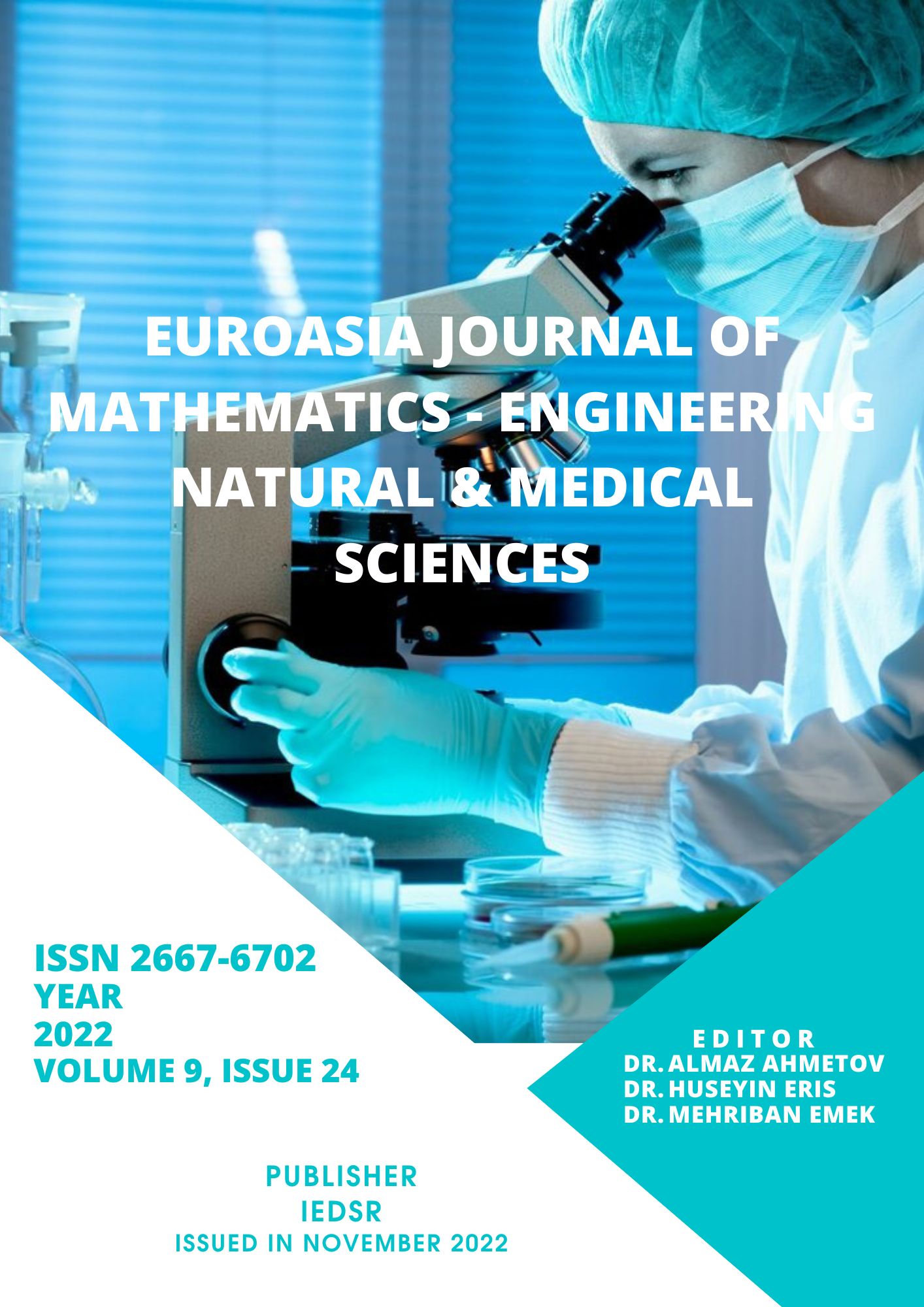The Long-Term Effects of Covid-19
DOI:
https://doi.org/10.5281/zenodo.7364853Keywords:
COVID-19, Dyspnea, Pulmonary fibrosis, ComplicationAbstract
COVID-19 pandemic has caused great concern for the high mortality worldwide. Moreover, approximately 75% of individuals who recover from COVID-19 do not regain their normal health. They have had various complaints, especially shortness of breath with exertion. The aim of the study is to evaluate the long-term effects of COVID-19 in patients recovering from COVID-19 and to review the relevant literature.
This study included 51 recovered patients with COVID-19. There were 25 male and 26 female patients ranging in age from 22 to 85 years, with a mean age of 57.98±12.38 years. The main complaints were fatigue, swelling in the legs, cough and forgetfulness, especially shortness of breath on exertion. In the radiological examination, ground glass appearance was detected in five cases, pneumothorax and diffuse subcutaneous emphysema in one case, reticular appearance in 10 cases, and linear appearance in 23 cases. Venous Doppler ultrasonographic examination revealed venous insufficiency in 23 cases and deep venous thrombosis (DVT) in three cases.
The virus that causes COVID-19 (SARS-CoV-2) can damage the pulmonary vasculature as well as the lung parenchyma.Serious complications such as bronchiectasis and fibrosis may develop after COVID-19. Individuals recovering from Covid-19 may have a tendency to diseases such as venous insufficiency and deep vein thrombosis (DVT) as a result of weakening of calf muscles and reduced effectiveness of the calf muscle pump. Thus, individuals recovering from COVID-19 should be examined intermittently. In addition, radiological lesions that persist after COVID-19 should be fully reported to avoid unnecessary invasive procedures such as bronchoscopy or thoracotomy in the future.
References
Abdullaev A, Fevraleva I, Odilov A, Volkov A, Babichenko I, Sudarikov A.Thrombotic events and the profile of hereditary thrombophilia factors in covid-19 patients. HemaSphere ; 5(SUPPL 2):641, 2021.
Achkar M, Jamal O, Chaaban T. Post-COVID lung disease(s). Ann Thorac Med. 2022;17(3):137-144.
Al-Jahdhami I, Al-Mawali A, Bennji SM. Respiratory complications after COVID-19. Oman Med J. 2022;37(1):e343.
Bilaloglu S, Aphinyanaphongs Y, Jones S, Iturrate E, Hochman J, Berger JS. Thrombosis in hospitalized patients with COVID-19 in a New York City health system. JAMA 2020. Aug;324(8):799-801 . 10.1001/jama.2020.13372
Chaudhary S, Natt B, Bime C, Knox KS, Glassberg MK. Antifibrotics in COVID-19 lung disease: let us stay focused. Front Med (Lausanne) 2020;7:539 . 10.3389/fmed.2020.00539
Çanga A. Covid-19’da Geç Dönem Kardiyovasküler Olaylar.YIU Saglik Bil Derg 2022;3:21−25.
Desai AD, Lavelle M, Boursiquot BC, Wan EY. Long-term complications of COVID-19. Am J Physiol Cell Physiol. 2022;322(1):C1-C11. doi: 10.1152/ajpcell.00375.2021.
Ekim M, Ekim H. Pandemi Döneminde Yaşlılarda B12 Vitamini Düzeyi. Gevher Nesibe Journal of Medical & Health Sciences. 2022; 7(19): 35-41.
Fabbri L, Moss S, Khan F, Chi W, Xia J, Robinson K, et al.. Post-viral parenchymal lung disease of COVID-19 and viral pneumonitis: a systematic review and meta-analysis. medRxiv 2021. 10.1101/2021.03.15.21253593.
Galal I, Hussein AA, Amin MT, Saad MM, Zayan HE, Abdelsayed MZ, et al. Determinants of persistent post-COVID-19 symptoms: value of a novel COVID-19 symptom score. Egypt J Bronchol 2021;15(1) . 10.1186/s43168-020-00049-4
Guler SA, Ebner L, Aubry-Beigelman C, Bridevaux PO, Brutsche M, Clarenbach C, et al.. Pulmonary function and radiological features 4 months after COVID-19: first results from the national prospective observational Swiss COVID-19 lung study. Eur Respir J 2021;57(4):2003690 . 10.1183/13993003.03690-2020
Hall J, Myall K, Lam JL, Mason T, Mukherjee B, West A, et al.. Identifying patients at risk of post-discharge complications related to COVID-19 infection. Thorax 2021;76(4):408-411 . 10.1136/thoraxjnl-2020-215861.
McDonald LT. Healing after COVID-19: are survivors at risk for pulmonary fibrosis? Am J Physiol Lung Cell Mol Physiol. 2021 Feb 1;320(2):L257-L265.
Ojo AS, Balogun SA, Williams OT, Ojo OS. Pulmonary fibrosis in COVID-19 survivors: predictive factors and risk reduction strategies. Pulm Med 2020;2020:6175964 . 10.1155/2020/6175964
Rai DK, Sharma P, Kumar R. Post covid 19 pulmonary fibrosis. Is it real threat? Indian J Tuberc 2021. Jul;68(3):330-333 . 10.1016/j.ijtb.2020.11.003
Sgalla G., Iovene B., Calvello M., Ori M., Varone F., Richeldi L. Idiopathic pulmonary fibrosis: pathogenesis and management. Respiratory Research. 2018;19(1):p. 32. doi: 10.1186/s12931-018-0730-2.
Shojaee A, Siner JM, Zinchuk A, Aryan Y, Kaminski N, Cruz CS. Viral pneumonia is associated with increased risk and earlier development of post-inflammatory pulmonary fibrosis. medRxiv 2021. . 10.1101/2021.03.08.21252412
Vasarmidi E, Tsitoura E, Spandidos DA, Tzanakis N, Antoniou KM. Pulmonary fibrosis in the aftermath of the COVID-19 era (Review). Exp Ther Med 2020;20(3):2557-2560 . 10.3892/etm.2020.8980
Wichmann D.Autopsyfindings and venous thromboembolism inpatients with COVID-19. Ann Intern Med173: 1030, 2020. doi:10.7326/L20-1206.
Yu M, Liu Y, Xu D, Zhang R, Lan L, Xu H. Prediction of the development of pulmonary fibrosis using serial thin-section ct and clinical features in patients discharged after treatment for COVID-19 pneumonia. Korean J Radiol 2020;21(6):746-755.
Zoumot Z, Bonilla MF, Wahla AS, Shafiq I, Uzbeck M, El-Lababidi RM, et al. Pulmonary cavitation: an under-recognized late complication of severe COVID-19 lung disease. BMC Pulm Med 2021. Jan;21(1):24 . 10.1186/s12890-020-01379-1.
Downloads
Published
How to Cite
Issue
Section
License
Copyright (c) 2022 Euroasia Journal of Mathematics, Engineering, Natural & Medical Sciences

This work is licensed under a Creative Commons Attribution-NonCommercial 4.0 International License.


